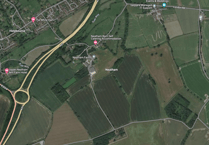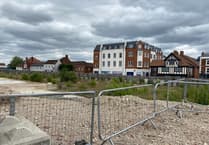In East Hampshire we have a deep emotional attachment to the character and quality of our built environment, and that is quite understandable when you consider the mix of picture-postcard rural villages and bustling historic towns we enjoy here.
But how do we protect it? And what stops developers from demolishing listed buildings or ditching plans to save a bit of money at the expense of the local community?
Planning rules are in place but without proper enforcement they would not be worth the paper they are written on.
Imagine a world without the police – it wouldn’t matter what law makers deemed off-limits if there was no-one to feel your collar if you stepped out of line.
That’s why we continue to invest in our planning enforcement team. They are one of the true unsung heroes of the council.
Without them our communities would quickly become chaos and East Hampshire would turn into a Wild West as developers ignored the rules and helped themselves.
To the uninitiated, planning enforcement may seem a little unglamorous or low profile. But if you draw your curtains one morning to find a monstrous eyesore blighting your previously-perfect outlook then you will suddenly care very deeply indeed about planning enforcement. Trust me on this, I have the emails from residents to prove it.
These issues can make a big impression, not just on neighbours but on a whole community.
There are often concerns about local house values, of course, but the impact goes beyond the financial into the emotional. People are passionate about what they see happening around their homes, and quite rightly so.
In April I was thrilled to see two successful court prosecutions in the space of a week.
Gratifying results like these are the product of months of painstaking and meticulous labour. Cases have to be built up, brick by brick, often in the face of aggressive opposition from the accused, impatient scrutiny from the local community and all the while dualling with lawyers who know just which loophole to slip through.
You can understand why people get agitated when there is no quick resolution but these investigations take time and diligence to see through.
The same is true of our fly-tip team that brought a successful case of their own to court in the past couple of weeks.
Fly-tipping is a blight on our countryside just as illegal development is to our built communities. Again, this kind of work is painstaking and often relies on the goodwill of witnesses to provide the crucial testimony in court.
And even successful prosecutions can lead to fines that are frustratingly meagre.
The law allows for unlimited fines, so I would love to see magistrates exercising their opportunities here and laying down a message to other would-be tippers.
We cannot catch every fly-tipper, but the central purpose of pursuing these investigations and then publicising them is to show people they can be caught and punished. That should serve as a deterrent to others thinking about damaging our environment.
The more results our investigators can record, the fewer fly-tips there will be and the less dodgy development we will see.




